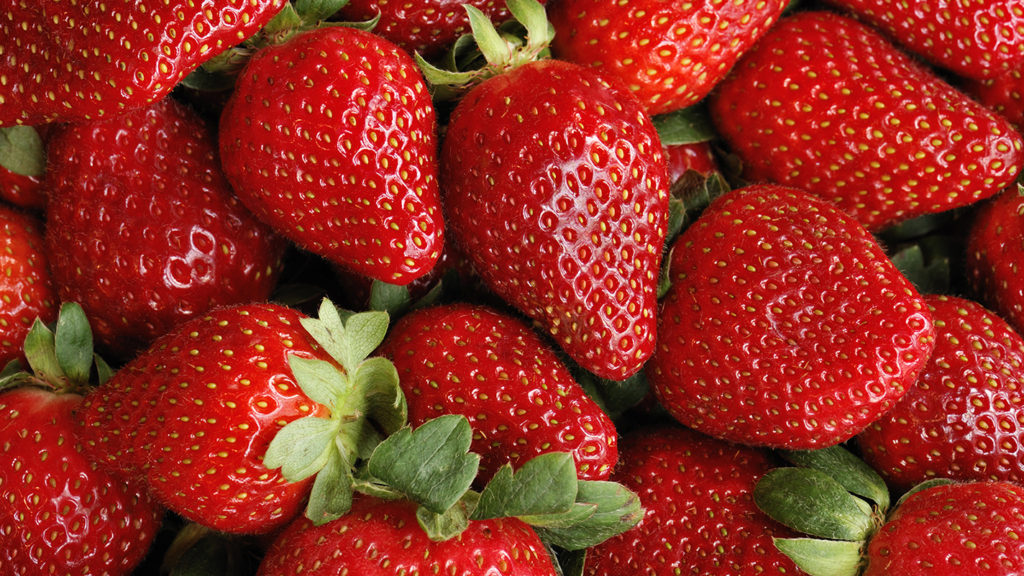When I was in college, I spent a few weeks picking strawberries for a fellow named Mr. Henderson who had a produce stand near where I lived. My roommate and I would get up at 5:00 a.m. and drive out to his piece of land where we would spend several hours picking in order to deliver to his stand when it opened around 10:00 a.m. It was back breaking, or rather knee breaking work. We had a running discussion about whether it was easier on our knees to pick kneeling or squatting.
Mr. Henderson had an assistant who walked around in a funny spacesuit with a big mask spraying something on all the strawberry plants. It only occurred to me later that we should have had masks too, because he was dousing them with a pesticide that was noxious enough to require some serious protection.
I mention this by way of noting that strawberries are one fruit where it is a good idea to buy organic if you are concerned about toxic pesticide exposure. The Environmental Working Group puts out a list each year of the “Dirty Dozen,” the twelve most contaminated fruits and vegetables. Strawberries are always near the top of that list. (You can find the current list at www.foodnews.org)
Although strawberries are available nearly year round these days, the period from April to June is when they are at their best. It is also the time of year when the price is lowest owing to abundant supply. If you are inclined to make strawberry jam or preserves, this is the prime time to do so. When buying strawberries, look for shiny, deep red fruit with leaves that are still green.
Strawberries are one of the most perishable fruits, so they should be eaten or processed within a few days of taking them home. If the berries are shiny and firm, leaving them out overnight at room temperature will bring them to the peak of ripeness. As for cooking strawberries, my advice is don’t. Raw berries have much better flavor and texture than cooked berries. Why ruin a good thing? By the same token frozen strawberries should be used only in a dire emergency.
The all time favorite use for strawberries is strawberry shortcake. Here’s a recipe for a traditional strawberry shortcake. This recipe makes a crisp shortcake, which is like a biscuit, rather than the soft fluffy cake that some people erroneously call shortcake.
OLD FASHIONED STRAWBERRY SHORTCAKE
2 cups flour
2 teaspoons baking powder
1/2 teaspoon salt
4 teaspoons sugar
6 tablespoons cold butter
ice water to make a stiff dough (3 to 4 tablespoons)
soft butter to moisten shortcake after baking
3 cups fresh, sliced strawberries which have been doused with sugar or honey and allowed to sit at room temperature for an hour (or refrigerate if kept longer).
Heavy cream for topping the cakePreheat the oven to 425°F
- Combine dry ingredients and cut in the shortening until mixture resembles cornmeal.
- Add water and mix until a ball of dough forms.
- Turn the dough out on a floured board and pat it flat and round until cake is about an inch thick.
- Bake until golden, about 12 to 15 minutes. Remove from oven, and with a sharp, heated knife, carefully split it and butter it as you would a biscuit. Put strawberries inside the still-hot buttered cake.
- Pour a small amount of heavy cream over each serving just before bringing to the table. (You can whip the cream if you want to, but it is good like this just poured over it)
Recipe adapted from Cooks.com


